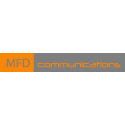Reporters' Biggest Grievance
I asked, and they answered. My unscientific poll included senior writers and editors at well-known news organizations including newswires, top financial magazines and national newspapers. These are the very people that most PR professionals want and need to know and they are increasingly frustrated by the same familiar tactics. But one in particular stood above the rest: Sending story pitches that have absolutely nothing to do with what the journalist, or even the publication, would ever consider covering as a news story. In fact, some ideas don’t even meet the definition of news or the easier standard of being even remotely interesting.
Over the years, I have heard this complaint with varying degrees of frustration coupled with some colorful language. To a PR person, a wrong pitch may seem insignificant, but for a busy journalist who may receive dozens of these a day, it can be a huge time-waster and more than simply annoying. And following up with a phone call will not help your cause. Equally important, when sending a useless pitch, you are also diminishing your own credibility with the journalists with whom you need to have established respect. And as a result, you’re damaging your career by not putting in the work to build goodwill with the journalists who ultimately determine if you’re effective at your job. Avoiding this mistake won’t take much time and will help advance your media relationships.
Read the Publication: The aforementioned journalists tell me that they constantly get press releases and pitches that are so distant from their audience that they question whether or not the PR person ever read their publication. There is a big difference between having an idea of what a publication covers and its intended audience and actually knowing what reporters are writing. Journalists are almost begging their PR counterparts to simply take a moment to read their publication. You’re trying to make a professional connection. That’s impossible if you don’t put in the time to understand the journalist’s area of expertise and his or her audience.
Identify Relevant Reporters: While you are reading your intended publication, take note of those who write about issues and topics important to your firm or client. Each publication has its own hierarchy and at times there are topics that get assigned. But for the most part, the by-line that you see would be the best person to start with when sending out your pitch. Editors will write but they should not be your first and frequent recipient of your emails. If you decide to hit send, be sure that the story idea or news event would be something of specific interest to the person on the receiving end.
Make the Pitch Clear, and Brief: Ok, you have the right publication, the right reporter and feel that your announcement, news, story idea, or white paper would have no better home. Reporters simply do not have enough time to read every press release and white paper that is sent to them. They have mastered the art of a quick scan on items that will pique their interest, but for the most part, they may miss what is most compelling because it is buried on page 5 of what you sent to them. Keep your pitch to the point and sort through your own information to show them what will be news or noteworthy to their readers. Presenting the media with a pitch that is easy to understand, gets to the point and justifies being sent to that reporter will go a long way in building long-term relationships and increase the chances of your emails being opened at all. In short, you have to think like a journalist, not only what interests them but how they convey information. You need get their attention early in your pitch.
Aligning the perfect pitch won’t always land a story, but your chances of having the media actually read or listen to you in the future will go up significantly. Consider all that journalists have to review and keep their eye on during the day and help them by giving them ideas and stories that they can use and not get sent directly to their trash.
Melissa F Daly has worked in financial and business communications for more than 20 years, with a special focus on key message development and strategy around critical issues. Melissa is a trusted advisor to communications professionals and industry leaders across the country and Founder of MFD Communications. Prior to starting MFD, Melissa was Vice President, Corporate Communications at Goldman Sachs. Prior to that, she was in senior communications roles at Brunswick Group, Fred Alger Management, The Hartford and Lipper. Melissa is often quoted in the press discussing a variety of business issues and Bloomberg calls her “a veteran Wall Street message maker.” Her broad experience spans across business sectors and continents.
